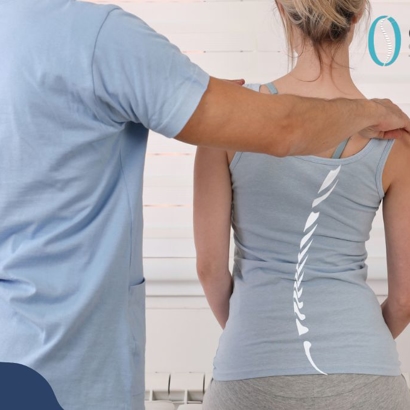
Anterior Cervical Discectomy and Fusion Tampa
Minimally Invasive Neck Procedure
ACDF, or Anterior Cervical Discectomy and Fusion is a minimally invasive neck procedure where a degenerative or herniated disc is removed from the neck. After the disc is removed, a graft is used to fuse the two vertebrae above and below the damaged disc.
What does ACDF stand for?
A stands for Anterior – This procedure is done from the front or anterior part of the body. In ACDF surgery, a small, minimally-invasive incision is made in the front of the neck.
C stands for Cervical – The cervical spine consists of the top 7 vertebrae (C1-C7) which is most commonly referred to as the neck.
D stands for Discectomy – A discectomy means to cut out, or remove, the disc. A discectomy can be performed anywhere on the spine.
F stands for Fusion – The final stage of the procedure involves inserting a bone graft to replace the empty spaced caused by the missing disc and fuse the two vertebrae together for stability.
Anterior Cervical Discectomy and Fusion Complications
Some of the most common complications following Anterior cervical discectomy and fusion include:
- Anesthesia risk
- Intermittent difficulty swallowing, following surgery but this usually resolves over the first few weeks.
- The nerve to the voice box can be injured during surgery with the nerve being stretched causing the patient to be hoarse for a few days or weeks after surgery. In rare cases if the nerve is actually cut, patients may have residual problems of hoarseness and voice fatigue.
- Thrombophlebitis
- Infection
- Nerve damage
- Problems with the graft- nonunion
- Recurring pain
Anatomy
A cervical disc, in the neck, absorbs impact and trauma.
Normal wear and tear of a cervical disc can result in disturbance of normal alignment of vertebrae and can result in abnormal bone growth or spurs.
This can cause foraminal cervical stenosis, or the narrowing of nerve root canals in the neck.
Encroachment on the nerve root by mal alignment, herniated discs or spurs may cause pain, numbness or muscle weakness in the hand and/or arm.
Contact us to learn more about ACDF surgery in Tampa & surrounding areas.
What are the benefits of ACDF surgery?
An anterior cervical discectomy and fusion can be both an outpatient or in hospital procedure with a 92-100% success rate in alleviating symptoms.
The post surgery recovery time is 4-6 weeks and the procedure has a low complication risk.
This creates a safer, less invasive procedure with a shorter recovery time.
What to Expect After ACDF Surgery
Overall, the recovery timeline and outcomes vary depending on individual factors such as overall health, the extent of the surgery, and adherence to postoperative care instructions. Open communication with the medical team at Comprehensive Spine Institute can help ensure a smooth recovery and optimal results following ACDF surgery. In general, here's what patients can expect after surgery:
- Pain Relief and Improved Function: Many patients experience significant pain relief and improved function following ACDF surgery, with symptoms such as neck pain, arm pain, and weakness often alleviated as the spine heals.
- Fusion Healing: The fusion process typically takes several months to complete. During this time, the bone graft placed during surgery fuses with the adjacent vertebrae, stabilizing the spine and alleviating symptoms caused by the damaged disc.
- Pain Management: Initially, patients may experience some discomfort or pain at the surgical site. Pain management techniques, including medication and ice packs, are typically provided to help alleviate discomfort during the recovery period.
- Restricted Activities: Patients may be advised to avoid certain activities, such as heavy lifting, bending, or twisting, to prevent strain on the neck and promote proper healing of the fusion site. Compliance with activity restrictions is crucial for optimal recovery.
ACDF Recovery Time
Most ACDF patients are discharged from the hospital the day after surgery, but your physician will determine the best postoperative course for you, depending on your recovery and any other health concerns.
Patients are able to return home when their medical condition is stable and to monitor their activities as the graft heals.
Your physician will discuss your pain medication requirement, wound care instructions, exercises, physical therapy, use of a collar and any activity restrictions, if applicable.
-
Minimal Wait TimeYou shouldn't have to wait a profound amount of time to see a physician we'll get you in, in two weeks or less.
-
Education Is KeyWe believe in educating our patients so they feel empowered when making decisions about their care.
-
4 Convenient LocationsWe are easily accessible with 4 locations that are able to provide the same quality of care.
-
Multi-Specialty PracticeWe pride ourselves on providing our patients with care from physicians who specialize in their needs.
The Latest In Orthopedics
-
 The Case for Epidural Steroid Injections
The Case for Epidural Steroid InjectionsDiscover Relief with Epidural Steroid Injections Living with chronic spinal pain can be exhausting, impacting every ...
Read More -
 Innovative Treatments for Back Pain: Exploring the Latest Advances in Spine Care
Innovative Treatments for Back Pain: Exploring the Latest Advances in Spine CareInnovations in Back Pain Treatment for a Healthier Future Dealing with back pain can take a toll on every aspect of your ...
Read More -
 What Is Spinal Cord Stimulation?
What Is Spinal Cord Stimulation?Spinal cord stimulation (SCS) is a cutting-edge technique that leverages electrical impulses to mitigate chronic pain. ...
Read More -
Understanding Workers' Compensation for Spine Injuries: A Guide for Employees
If you've suffered a spine injury on the job, workers' compensation could be a vital lifeline. This government-mandated ...
Read More


.2408222022228.png)